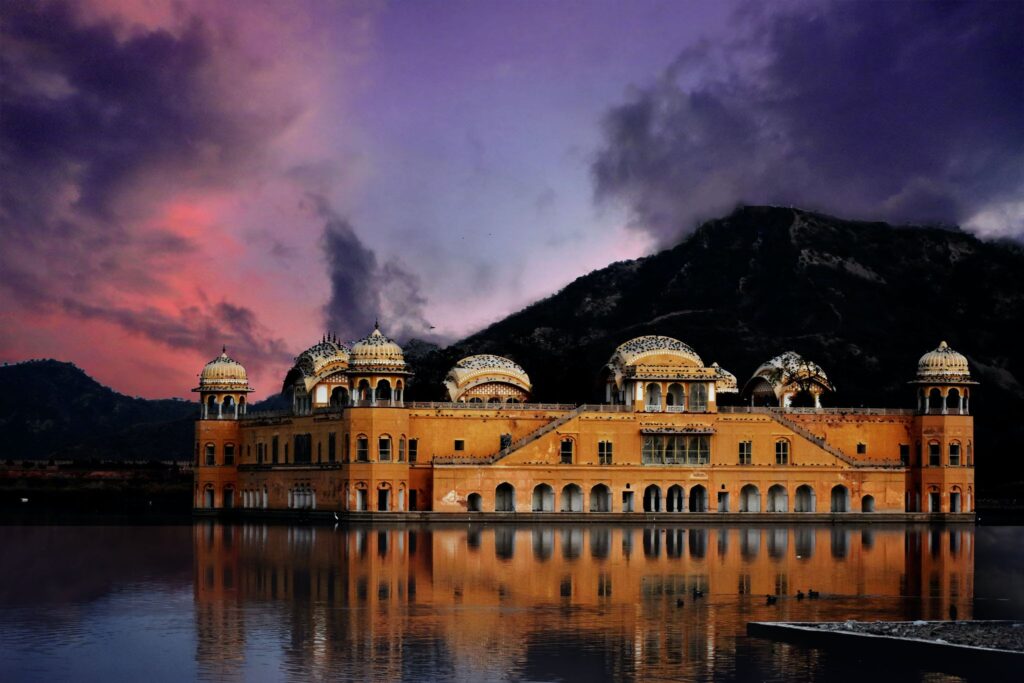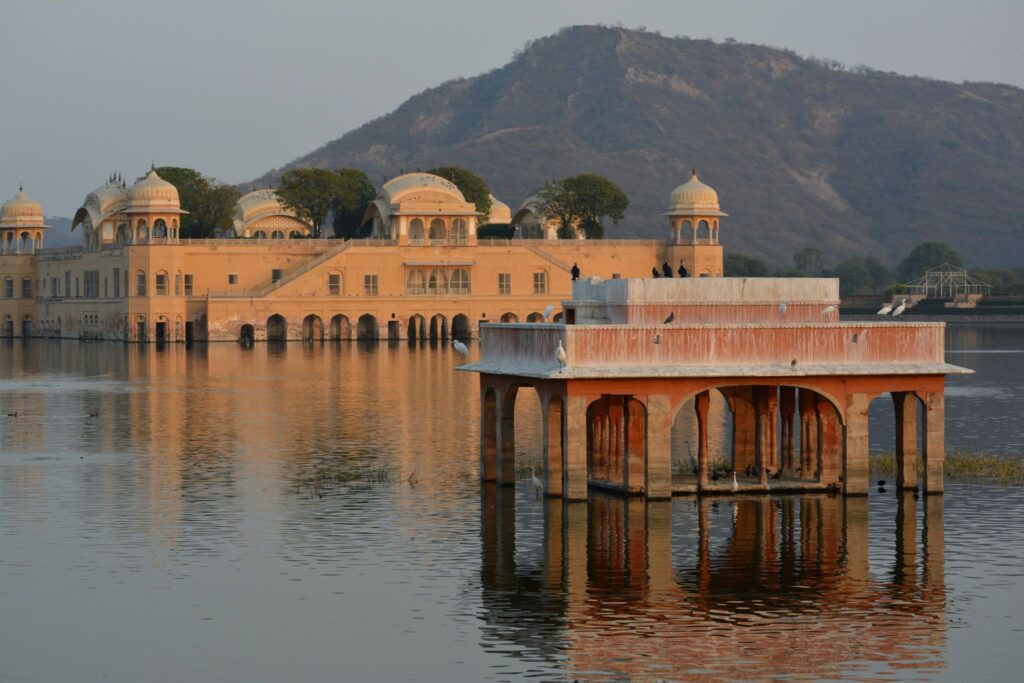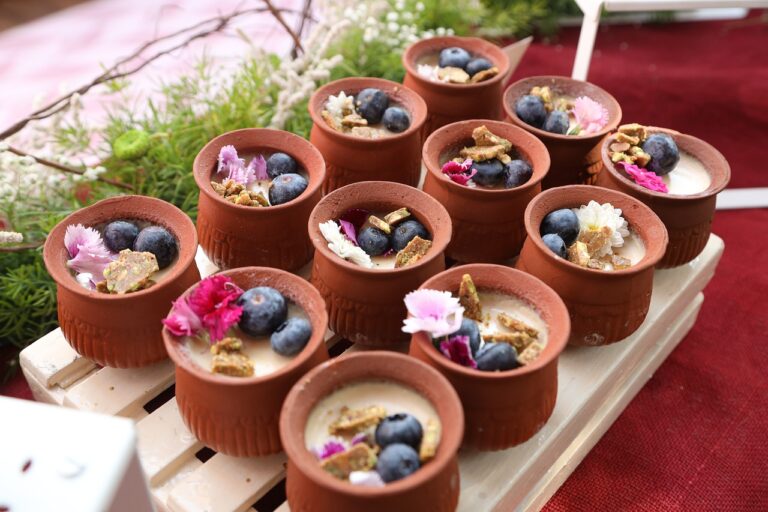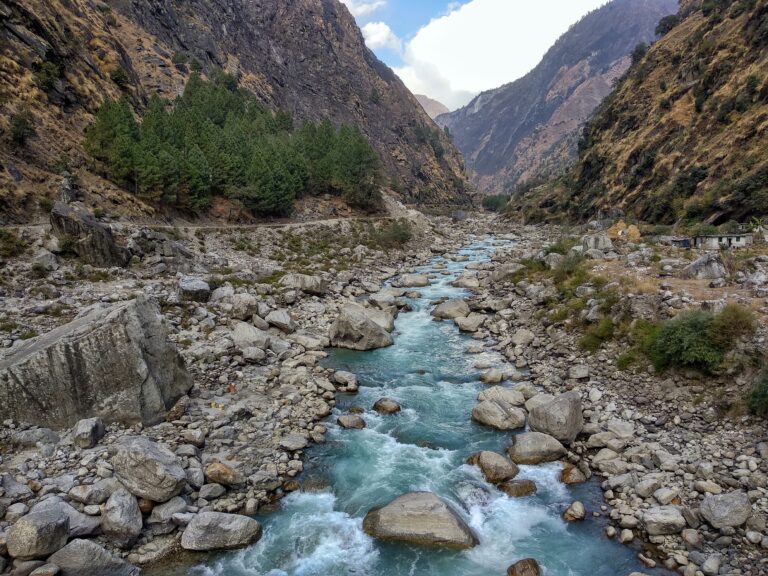Nestled amidst the tranquil waters of the Man Sagar Lake, Jal Mahal is located in the heart of Jaipur, an architectural masterpiece that has stood the test of time. Other names for it include the Water Palace, the Floating Palace, and Underwater Palace. This red sandstone palace, built by Maharaja Sawai Pratap Singh in the 18th century, is a testament to the grandeur and opulence of Rajputana architecture.
As one approaches the floating palace, the striking structure rising out of the water captures the attention. The intricate carvings and sculptures that adorn its walls are a testament to the unparalleled craftsmanship of the artisans of the time. The location of the palace in the middle of the lake provides a chill retreat during the summer months and also serves as a symbol of Rajasthan’s deep-rooted connection to nature. The Jal Mahal is not only a visual treat but also a window into the rich cultural heritage of Rajasthan. The palace is also adorned with delicate jali work, which adds to its ethereal beauty.

The palace served as a pleasure palace and a hunting lodge for the royal family, and its location in the middle of the lake was a strategic move, as it provided a cool retreat during the scorching summer months. Admired as an architectural marvel, the half-immersed structure that stands tall after all these years is a mystery.
The interiors of the palace are decked with opulent interiors. There are numerous courtyards, each one more impressive than the previous one. These courtyards decorated with elaborate murals and frescoes portray episodes from Rajput mythology and tradition. Additionally, the palace features several halls and chambers, each with a distinct charm and personality. The Diwan-i-Aam, or the public audience hall, is particularly impressive, with its ornate ceilings and grand chandeliers.
The palace also has several terraces, which offer breathtaking views of the lake and the surrounding area. One can also see the remnants of a pleasure palace, where the royal ladies used to take part in leisurely activities such as boat riding and picnics. The palace’s location in the middle of the lake has also made it a popular spot for birdwatching. Home to a variety of migratory birds, such as the common teal, the tufted duck, and the pintail. The lake also has several boat rides available, which offer a unique perspective of the palace and its surroundings.

Only if you visit the palace during or after sunset will you be able to experience the palace’s nocturnal spectacle and breathtaking surroundings. Visitors are welcome to enjoy the stunning scenery from the lake, even though you are not allowed to enter the palace grounds. The tranquillity and serenity that surround the area at night only serve to enhance the appeal of the magnificent setting.
Near Jal Mahal, many shops sell gorgeous jewellery and fine handicrafts that are worth checking out. Rajasthan’s characteristic blue ceramics, marble and clay idols, designed gesso purses, and Thewa and Meenakari jewellery are just a few examples of artisan goods that bear their vivid, distinct individuality. Adjacent shops also sell khadi garments for a very affordable price. Another amazing experience is taking a camel ride around the lake. Getting a camel ride close to Jal Mahal will give you the true taste of Rajasthan.
Despite its grandeur and opulence, the Jal Mahal is also a symbol of Rajasthan’s rich cultural heritage. The location of the grandeur right in the middle of the lake is a reflection of the Rajputs’ love for nature and their deep-rooted connection to the land. The architecture is also a reflection of their cultural traditions, as it blends elements of Rajput and Mughal styles. These architectural patterns can also be seen in many other forts and palaces that have been turned into resorts, out of which you can pick any one Resort in Jaipur to stay in during your visit.
The Jal Mahal is a palace not to be missed on a visit to Jaipur. Its stunning architecture, rich cultural heritage, and picturesque location make it one of the most iconic landmarks of the city. The palace’s location in the middle of the lake also makes it a unique and memorable experience. It is a true reflection of the grandeur and opulence of Rajputana architecture and a testament to the rich cultural heritage of Rajasthan.







